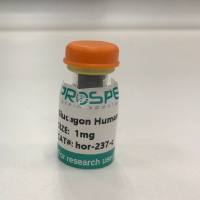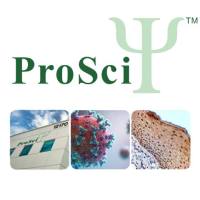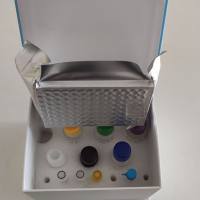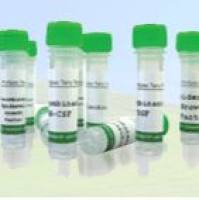Downmodulation and Recycling of Chemokine Receptors
互联网
666
Binding of chemokines to their receptors induces a variety of biological responses, ranging from early and rapid events such as receptor phosphorylation and calcium influx to prolonged responses such as cellular migration (
1
,
2
). Downmodulation of chemokine receptors from the cell surface becomes detectable after a few minutes and reaches its maximum after 20–30 min. Recycling of the receptor after removal of the ligands is a slow process, that requires 15–120 min (
3
,
4
). As chemokine receptors function as coreceptors for HIV-type 1 and 2, the amount of receptors present on the cell surface during and after incubation with various ligands substantially influences the likelihood of HIV infection (
3
,
5
). Assays to measure downmodulation and recycling of chemokine receptors can therefore help to determine the potential of ligands to reduce cellular HIV infection. Different ligands can show marked differences in their spectum of functional responses on chemokine receptors (Figs. 1 and 2 ). An interesting example is the effect of RANTES, Met-RANTES, and AOP-RANTES (
6
) on hCCR5. In contrast to RANTES and Met-RANTES, AOP-RANTES almost completely downmodulates CCR5 from the cell surface, although it induces less calcium influx and even blocks RANTES-induced cell migration (
3
). Moreover, AOP-RANTES, in contrast to RANTES, prevents recycling of CCR5 after wash-out of chemokines as shown in Fig. 3 .
Fig. 1.
Downmodulation of CCR5 from the surface of stably transfected CHO-CCR5 cells with RANTES, AOP-RANTES, and Met-RANTES. Staining of CCR5 was performed with the CCR5-antibody MC-1. (Adapted with permission from
ref.
3
.)
Fig. 2.
Downmodulation of CCR5 from the surface of stably transfected CHO-CCR5 cells with RANTES, Mip-α and Mip-β as shown in legend. Staining of CCR5 was performed with the CCR5-antibody MC-1. (Adapted with permission from
ref.
3
.)
Fig. 3.
Recycling of the CCR5 after downmodulation with RANTES (30 n
M
) or AOP-RANTES (30 n
M
). The assay was performed with stably transfected CHO-CCR5 cells.







